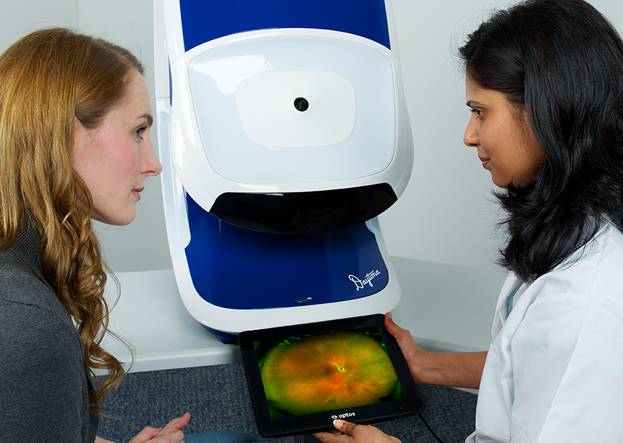Many eyecare practitioners have patients that have been with them for years or have conditions that may require more frequent exams, which can make the patient’s records seem to stretch on for miles. And unfortunately, traditional forms of record keeping can make it extremely easy to overlook an important part of the patient’s health that needs to be discussed. As Palmer N. Lee, OD of EYEcenter Optometric recently shared with Review of Optometric Business, it helps to have “a record at your fingertips prompting you to talk about these things with each patient. That’s what electronic records do in the exam room…”
Dr. Lee elaborates on that point, sharing that by keeping electronic health records, he can quickly identify previous issues, such as past diagnoses and patient complaints, which can be used to start deep conversations that “facilitate enhanced interaction” between a doctor and patient. To prepare for these conversations, Dr. Lee’s staff enters all medical information into each patient’s records prior to the exam, as well as information about the reason for the visit, acuities, retinal images and other facts. This way, Dr. Lee can review the information and be fully prepared for the patient’s visit. He advises this is especially pertinent, as many patients find it frustrating when a doctor asks for the reason of their visit. Showing you’ve prepared in advance lets the patients know you’re well-aware of previous conditions and have a plan of action for the exam.
During the exam, Dr. Lee uses electronic health records to guide the conversation as he reviews the patient’s condition with them. He especially enjoys having retinal images on hand to use for patient education opportunities regarding the health of their eyes. The ability to keep track of a patient’s lifestyle details, such as their occupation or hobbies through electronic medical records, is also beneficial. This helps practitioners like Dr. Lee understand a patient’s needs and make recommendations for the patient, such as modifying their prescription sunglasses to better suit any changes.
Optos makes it easy for practitioners to utilize electronic health records, since our optomap® images are stored electronically. They are readily available for reference at the patient’s next exam. Contact us to learn more about how our ultra-widefield retinal imaging devices and innovative optomap® exam can benefit your practice.
Are you using electronic health records at your practice? Are they enhancing your relationships with patients? Share your thoughts with us in a comment below!
